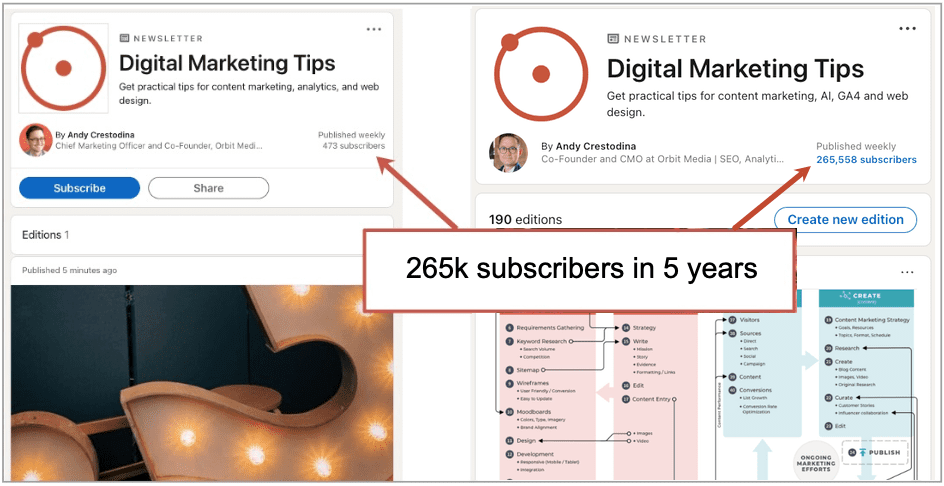What the ‘2% of VC funding’ stat gets wrong about women entrepreneurs
The narrative that women entrepreneurs receive less than 2% of venture capital (VC) funding has been widely circulated. It stems from data provided by Pitchbook, a respected research firm that delivers insights on global capital markets. However, a closer examination of their data reveals a more nuanced perspective. Pitchbook only studies investments funded by VC firms, which is a big part of the market but does not include the very substantial investments made by angel investors. Significant progress has been made in these early stages of the venture market. Twenty years ago, a mere 3% of angel-funded startups were led by women. Fast-forward to today, and women now account for well over 30% of angel-funded companies. Researching and monitoring these shifts have been a critical part of our own investing journey as the co-CEOs of Golden Seeds, an organization that invests exclusively in early-stage women-led U.S. companies. Back in 2004, when Golden Seeds was founded, there was a data void. Insights on women entrepreneurs and women’s leadership were rarely collected because they simply weren’t considered important. Thankfully there is now more research into these topics. Pitchbook has been a leader in this effort, particularly as it relates to later-stage venture capital funding. But in the process of deciphering the data around female founders, a misleading narrative has inadvertently been created. Understanding the methodology behind these—and any venture—statistics is crucial to appreciating the strides made by women in the startup ecosystem. Here are the two biggest misrepresentations worth clarifying about women entrepreneurs and their ability to secure capital. Misinterpretation #1: Women get less than 2% of capital Countless articles, books, and panels have cited that only 2% of VC funding goes to women entrepreneurs. However, this interpretation is incorrect because Pitchbook collects data only on company founders, which excludes women in executive leadership roles or those who might move into executive roles and hold substantial equity. These women are not included in these calculations but they play important roles in the success of their companies. Furthermore, when including funding received by gender-diverse founding teams, the numbers reveal a more encouraging trend. In 2024, companies founded by at least one woman secured 23% of total VC capital, a considerable increase from just 9% in 2008. Additionally, the percentage of deals VCs invest in that include at least one female founder has more than doubled in the same time frame, from 12.2% to 25.4%. That number may in fact be even higher when you consider that this data excludes companies that have non-founder women in key roles who hold substantial equity. The growing presence of gender-diverse teams signals a positive shift in the funding landscape, as startup investors increasingly recognize the benefits of diverse leadership in driving business success. It also more accurately reflects the full universe of startups seeking capital today. Of course, the reality remains that 75–80% of VC funding goes to companies with all-male founding teams (although we do not have information on the gender diversity of the management teams of these companies at the time of funding). More work is needed to get the venture industry closer to realizing gender parity. And it’s critical that we analyze the current data beyond just the single point of the initial founders. Misinterpretation #2: Female founders need a male cofounder to successfully raise VC capital One notable trend in the VC space is the increased success of mixed-gender founding teams in securing investment. While some may interpret this as a disadvantage for all-female teams, this conclusion is misleading. Founding teams form in many different ways, and most investors prioritize skill, determination, and the strength of the business over gender composition. Research consistently highlights the advantages of diverse teams, including broader skill sets, varied perspectives, and enhanced problem-solving capabilities. These benefits may make mixed-gender teams attractive to investors seeking to maximize their returns. And in our experience, founding teams are increasingly more likely to include both women and men. Systemic biases, however, still persist within the VC industry. Historically, VCs have favored investing in industries such as software and AI—sectors where women have been underrepresented. Additionally, many investors prefer to back serial entrepreneurs with prior successes, a criterion that disproportionately benefits male founders due to historical inequalities in startup funding. Addressing these biases is essential to ensuring that innovative ideas from women and underrepresented founders receive the recognition and investment they deserve—and that the progress made at the earliest stages of the market continues into later stages. Women are doing

The narrative that women entrepreneurs receive less than 2% of venture capital (VC) funding has been widely circulated. It stems from data provided by Pitchbook, a respected research firm that delivers insights on global capital markets. However, a closer examination of their data reveals a more nuanced perspective. Pitchbook only studies investments funded by VC firms, which is a big part of the market but does not include the very substantial investments made by angel investors. Significant progress has been made in these early stages of the venture market.
Twenty years ago, a mere 3% of angel-funded startups were led by women. Fast-forward to today, and women now account for well over 30% of angel-funded companies. Researching and monitoring these shifts have been a critical part of our own investing journey as the co-CEOs of Golden Seeds, an organization that invests exclusively in early-stage women-led U.S. companies.
Back in 2004, when Golden Seeds was founded, there was a data void. Insights on women entrepreneurs and women’s leadership were rarely collected because they simply weren’t considered important. Thankfully there is now more research into these topics. Pitchbook has been a leader in this effort, particularly as it relates to later-stage venture capital funding. But in the process of deciphering the data around female founders, a misleading narrative has inadvertently been created.
Understanding the methodology behind these—and any venture—statistics is crucial to appreciating the strides made by women in the startup ecosystem. Here are the two biggest misrepresentations worth clarifying about women entrepreneurs and their ability to secure capital.
Misinterpretation #1: Women get less than 2% of capital
Countless articles, books, and panels have cited that only 2% of VC funding goes to women entrepreneurs. However, this interpretation is incorrect because Pitchbook collects data only on company founders, which excludes women in executive leadership roles or those who might move into executive roles and hold substantial equity. These women are not included in these calculations but they play important roles in the success of their companies.
Furthermore, when including funding received by gender-diverse founding teams, the numbers reveal a more encouraging trend. In 2024, companies founded by at least one woman secured 23% of total VC capital, a considerable increase from just 9% in 2008. Additionally, the percentage of deals VCs invest in that include at least one female founder has more than doubled in the same time frame, from 12.2% to 25.4%. That number may in fact be even higher when you consider that this data excludes companies that have non-founder women in key roles who hold substantial equity.
The growing presence of gender-diverse teams signals a positive shift in the funding landscape, as startup investors increasingly recognize the benefits of diverse leadership in driving business success. It also more accurately reflects the full universe of startups seeking capital today.
Of course, the reality remains that 75–80% of VC funding goes to companies with all-male founding teams (although we do not have information on the gender diversity of the management teams of these companies at the time of funding). More work is needed to get the venture industry closer to realizing gender parity. And it’s critical that we analyze the current data beyond just the single point of the initial founders.
Misinterpretation #2: Female founders need a male cofounder to successfully raise VC capital
One notable trend in the VC space is the increased success of mixed-gender founding teams in securing investment. While some may interpret this as a disadvantage for all-female teams, this conclusion is misleading. Founding teams form in many different ways, and most investors prioritize skill, determination, and the strength of the business over gender composition. Research consistently highlights the advantages of diverse teams, including broader skill sets, varied perspectives, and enhanced problem-solving capabilities. These benefits may make mixed-gender teams attractive to investors seeking to maximize their returns. And in our experience, founding teams are increasingly more likely to include both women and men.
Systemic biases, however, still persist within the VC industry. Historically, VCs have favored investing in industries such as software and AI—sectors where women have been underrepresented. Additionally, many investors prefer to back serial entrepreneurs with prior successes, a criterion that disproportionately benefits male founders due to historical inequalities in startup funding. Addressing these biases is essential to ensuring that innovative ideas from women and underrepresented founders receive the recognition and investment they deserve—and that the progress made at the earliest stages of the market continues into later stages.
Women are doing well raising capital from angel investors. They are receiving funding at a comparable yield to other entrepreneurs. (The yield is the rate at which companies seeking funding receive funding.) This trend has been growing for a long time now, as more women are actively pitching their businesses to angel investors. Forty-six percent of all companies seeking funding in 2023 were women-owned, up from 5% in 2004. In addition the growth of women angels, now over 40% of angel investors in the country, would seem to have played a significant role in increasing the share of funding.
It’s worth noting that the pace of VCs funding women-led companies has also been steadily improving, as described above, albeit slower than the progress in the angel market. And remember, VCs aren’t the only path to later-stage capital. Many entrepreneurs, both women and men, successfully seek subsequent funding from family offices, corporate ventures, and other high-net-worth individuals.
Embracing a more empowered narrative
Transforming an industry is challenging and oftentimes frustratingly slow. For 20 years, we’ve tracked the trends, educated investors, and rallied the support, both financial and otherwise, that women entrepreneurs need to grow their businesses. The world is recognizing the contributions and value of women-led companies and that progress shows up in the numbers when you look closely. But progress is a continuum, and the work isn’t finished. Encouraging greater diversity among investors, expanding funding opportunities in traditionally male-dominated industries, and addressing biases in investment decision-making will be crucial in leveling the playing field.
Moreover, continued advocacy and accurate representation of data are essential in shaping mindsets and initiatives that support women-led businesses. Perpetuating a narrative that overlooks the resilience and ingenuity of women entrepreneurs over the past 20 years discredits the progress we’ve made and subtly signals defeat. What’s needed is a nuanced understanding of the ecosystem so that a clearer picture of the barriers, progress, and opportunities of women-led companies is continually embraced and acted upon.






















































































































































